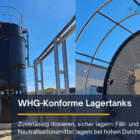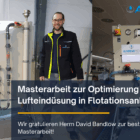Turbidity measurement
Turbidity measurement is an essential parameter in water treatment and wastewater treatment. It describes the degree of light scattering and absorption in a liquid caused by suspended particles such as suspended solids, microorganisms or colloidal impurities. Precise turbidity measurement provides important information about water quality, process stability and efficiency








